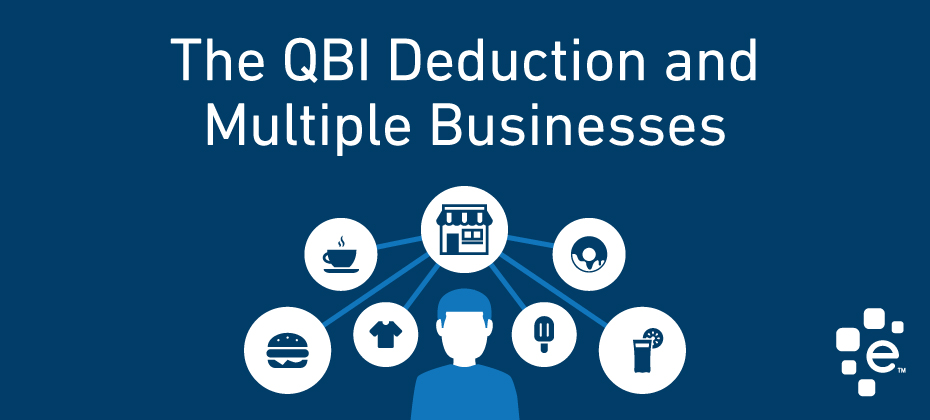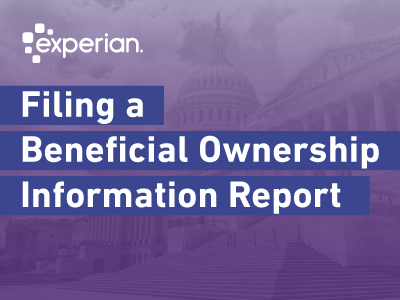The Qualified Business Income Deduction is part of the recently revised business tax code. In this guest post, leading author and tax expert, Barbara Weltman how business owners with multiple businesses can approach the QBI deduction. You can find more blogs by Barbara on her blog Big Ideas for Small Business.
The qualified business income (QBI) deduction provides a significant opportunity for business owners to slash their federal income tax bill. Designed to lower the effective tax rate on owners of pass-through entities, the write-off can be as much as 20% of QBI. But various limitations come into play that can reduce or bar the deduction. For a basic primer on QBI, read my earlier post “Understanding The New Qualified Business Income Deduction.” If you are a business owner with an interest in multiple businesses, you should read on. The good news is, you may be able to aggregate them to optimize their deduction. The bad news: certain businesses may not be able to break up in order to use the deduction, more on that part later. So here are some of the points to note in putting businesses together or taking them apart in order to get the biggest QBI deduction possible.
Aggregating businesses
Usually, if you own businesses directly (a sole proprietorship or single-member limited liability company, or LLC) or have interests in S corporations, partnerships, or limited liability companies (LLCs), you figure the deduction for each business and then combine them for a single entry on your tax return. But you may be able to lump your business numbers together in figuring your QBI deduction. This may allow you to take a larger deduction than if you didn’t aggregate your business interests. If eligible, you can aggregate your interests, regardless of what your co-owners do with their interests.
To qualify for aggregation, you must meet all 5 conditions:
- The same person or group of persons own (directly or indirectly) 50% or more of each business being aggregated.
- The 50% or more ownership exists for more than half the year.
- All tax items attributable to each business are reported on tax returns with the same tax year end (e.g., all businesses use a calendar year).
- None of the businesses are a specified service trade or business, or SSTB (any trade or business involving the performance of services in the fields of health, law, engineering, architecture, accounting, actuarial science, performing arts, consulting, athletics, financial services, brokerage services, or any trade or business where the principal asset of such trade or business is the reputation or skill of one or more of its employees or owners).
- The businesses being aggregated satisfy at least 2 of these 3 requirements: (a) the businesses provide products and services that are the same (e.g., a restaurant and a food truck) or customarily provided together (e.g. a gas station and a car wash), (b) the businesses share facilities or significant centralized elements (e.g., personnel, accounting, legal, manufacturing, purchasing, human resources, or information technology services), and (c) the businesses operate in coordination with or reliance on each other (e.g., they have supply chain interdependencies).
Other key points:
- Assuming eligibility, you can choose to aggregate some of your businesses and not others.
- The aggregation of businesses for purposes of the passive activity loss rules has no impact on aggregation for the QBI deduction.
- If one of the businesses being aggregated produces a negative QBI, each business with a positive QBI must be offset by a portion of the negative QBI. But W-2 wages and the unadjusted basis immediately after acquisition (UBIA) of qualified property from a business that has a negative QBI aren’t taken into account in figuring the QBI limitation.
- If there’s an overall negative QBI for the year, it is treated as a loss from a qualified business in the following year (the loss continues to haunt you).
- An election to aggregate businesses means they must continue to be aggregated in the future. New businesses can be added to the aggregated group. But if things change for businesses within the group (e.g., ownership drops below 50%), they may no longer qualify for aggregation.
Each year you must attach to your return a statement identifying each business being aggregated. If you don’t, the IRS can “disaggregate” the businesses.
Chopping up businesses
Specified Service Trade Businesses’s (SSTB’s) with owners having high taxable income that would otherwise bar them from taking a QBI deduction may have thought they could separate out some functions in an attempt to qualify those separate parts as non-SSTBs. For example, it had been suggested to remove administrative functions or building ownership into a separate business to at least get the QBI deduction for this business. While having separate businesses is certainly allowed, the IRS has effectively killed the idea of chopping up businesses in certain situations in order to get the QBI deduction.
- An SSTB includes any trade or business with 50% or more common ownership that provides 80% or more of its property or services to an SSTB.
- If a trade or business has a 50% or more common ownership with an SSTB, to the extent it provides property or services to the commonly-owned SSTB, the portion of the property or services is treated as income from an SSTB.
- Even if a business would not otherwise be an SSTB but has 50% or more common ownership with an SSTB and shared expenses (e.g., wages, overhead expenses), it is treated as incidental to an SSTB if its gross receipts are modest. More specifically, the trade or business will be treated as an SSTB if its gross receipts represent no more than 5% of the gross receipts of the combined businesses.
Bottom line
The QBI deduction is a wonderful way to reduce your tax bill because it doesn’t cost you anything to get it (you don’t need to expend any money); it’s yours if you qualify. For the vast majority of business owners, the deduction is rather straightforward. But qualifying for the deduction becomes a complicated matter for anyone with taxable income over $315,000 on a joint return or $157,500 on any other return. Check with your tax advisor to learn more about how you can qualify for this write-off.
Learn more about the QBI Deduction at our upcoming webinar with Barbara Weltman October 2nd.


